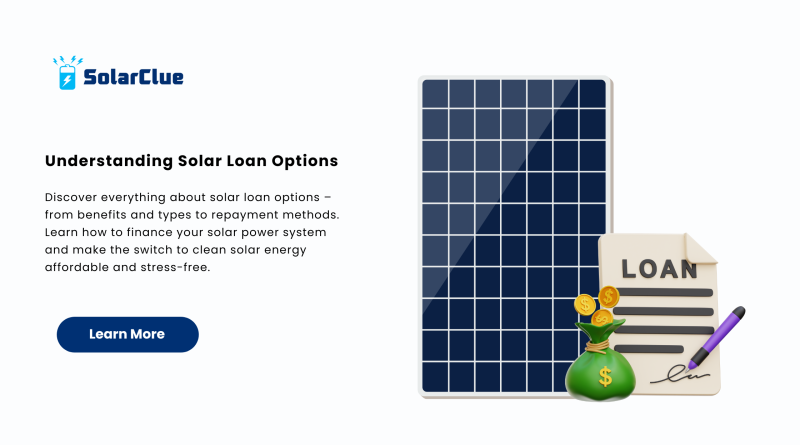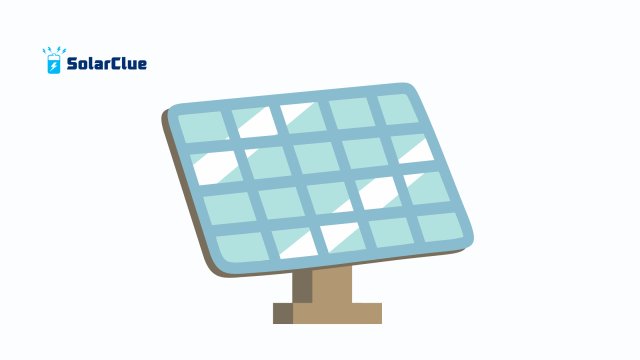Understanding Solar Loan Options
Installing a solar power system at home or business is no longer just about sustainability—it’s also a smart financial decision. However, the upfront cost of purchasing and installing solar panels often discourages people from moving forward. This is where solar loan options come into play. By spreading the cost over manageable installments, loans make renewable energy more accessible, allowing you to enjoy the benefits of solar energy without draining your savings. In this blog, we’ll dive deep into understanding different solar loan options, their benefits, and what you should consider before making the switch.
Table of Contents
- 1 What Are Solar Loans?
- 2 Why Choose Solar Loan Options?
- 3 Types of Solar Loan Options
- 4 Factors to Consider Before Choosing Solar Loan Options
- 5
- 6 How Solar Loan Options Compare to Leasing
- 7 Step-by-Step Guide to Getting a Solar Loan
- 8 Benefits of Using Solar Loan Options
- 9 Common Myths About Solar Loans
- 10 FAQs on Solar Loan Options
- 11 Conclusion
What Are Solar Loans?
A solar loan is a financing method designed to help homeowners and businesses pay for their solar panel installation. Much like a home loan or car loan, it allows you to pay for your solar power system over time, usually with interest. Instead of paying a large sum upfront, you can spread the cost across monthly installments, making it easier to transition to clean energy.
Why Choose Solar Loan Options?
The popularity of solar loan options has grown rapidly because they offer:
-
Affordability: Reduce or eliminate large upfront payments.
-
Ownership Benefits: Unlike leasing, you own the solar power system, which increases your property’s value.
-
Energy Savings: Use your energy bill savings to pay your loan installments.
-
Tax Incentives: Many governments provide tax rebates or subsidies for solar energy adoption.
Types of Solar Loan Options
1. Secured Solar Loans
These require collateral (like your home). They often come with lower interest rates and longer repayment terms, making them ideal for homeowners with strong credit.
2. Unsecured Solar Loans
These don’t need collateral but generally have higher interest rates. They are suitable for those who don’t want to risk assets.
3. Home Equity Loans or HELOCs
If you already own property, you can tap into your home equity to fund your solar power system. This method usually provides favorable interest rates.
4. Personal Loans for Solar
Offered by banks and online lenders, these are flexible but may vary in terms of repayment period and interest rates.
Factors to Consider Before Choosing Solar Loan Options
Interest Rate and Loan Term
Evaluate whether a short-term loan with higher monthly payments or a long-term loan with lower payments works better for your budget.
Monthly Savings vs. Loan Payment
Calculate your monthly energy bill savings from solar energy and ensure they offset your loan installment.
Incentives and Subsidies
Check if your region provides tax credits, rebates, or government support for solar panel financing.
Ownership Benefits
With solar loan options, you own the solar power system, which adds value to your property, unlike renting or leasing.
How Solar Loan Options Compare to Leasing
-
Ownership: With loans, you own the panels; with leasing, the company owns them.
-
Savings: Loans allow you to benefit from long-term savings, while leasing may offer limited cost benefits.
-
Incentives: Owners qualify for government tax credits and incentives; lessees typically don’t.
Step-by-Step Guide to Getting a Solar Loan
-
Evaluate Your Energy Needs: Understand how much solar power you require.
-
Get Quotes: Compare offers from banks, NBFCs, and solar financing companies.
-
Check Eligibility: Review credit score requirements and repayment terms.
-
Apply for the Loan: Submit necessary documents and finalize your loan option.
-
Install Your Solar Panels: Once approved, your solar panel system installation can begin.
-
Start Repayment: Use your energy savings to make monthly repayments easier.
Benefits of Using Solar Loan Options
-
Immediate access to clean solar energy.
-
Long-term reduction in electricity costs.
-
Increased property resale value.
-
Contribution to sustainability by reducing carbon footprint.
Common Myths About Solar Loans
Myth 1: Solar loans are too expensive.
Reality: With falling interest rates and rising energy savings, they’re more affordable than ever.
Myth 2: Only homeowners can get solar loans.
Reality: Some banks and lenders offer options even for tenants and businesses.
Myth 3: Loan repayments cancel out savings.
Reality: In many cases, the savings from solar energy exceed the monthly loan repayment.
FAQs on Solar Loan Options
Q1. Are solar loans better than paying upfront?
Yes, if you don’t have enough savings, solar loans spread the cost, making the investment manageable.
Q2. Can I get tax benefits with a solar loan?
Yes, owning a solar power system through loans qualifies you for government subsidies and tax rebates in many regions.
Q3. What is the average loan tenure for solar loans?
Typically 5–15 years, depending on the lender and loan type.
Q4. Do solar loans affect my credit score?
Yes, like any loan, timely repayment can improve your credit score, while defaults may lower it.
Q5. How much can I save monthly with a solar loan?
Savings depend on your energy usage and system size, but in most cases, monthly savings from solar power exceed loan installments.
Conclusion
Understanding solar loan options is the key to making renewable energy affordable and accessible. With the right loan, you can own your solar panel system, enjoy reduced energy bills, and contribute to a sustainable future without financial stress. If you’re considering switching to solar energy, carefully compare your financing choices and calculate long-term benefits.
Thinking of making the leap to solar power? Visit solarclue.com and blog.solarclue.com today to explore expert insights, solutions, and guidance to help you finance and install your perfect solar power system in the smartest way possible.



